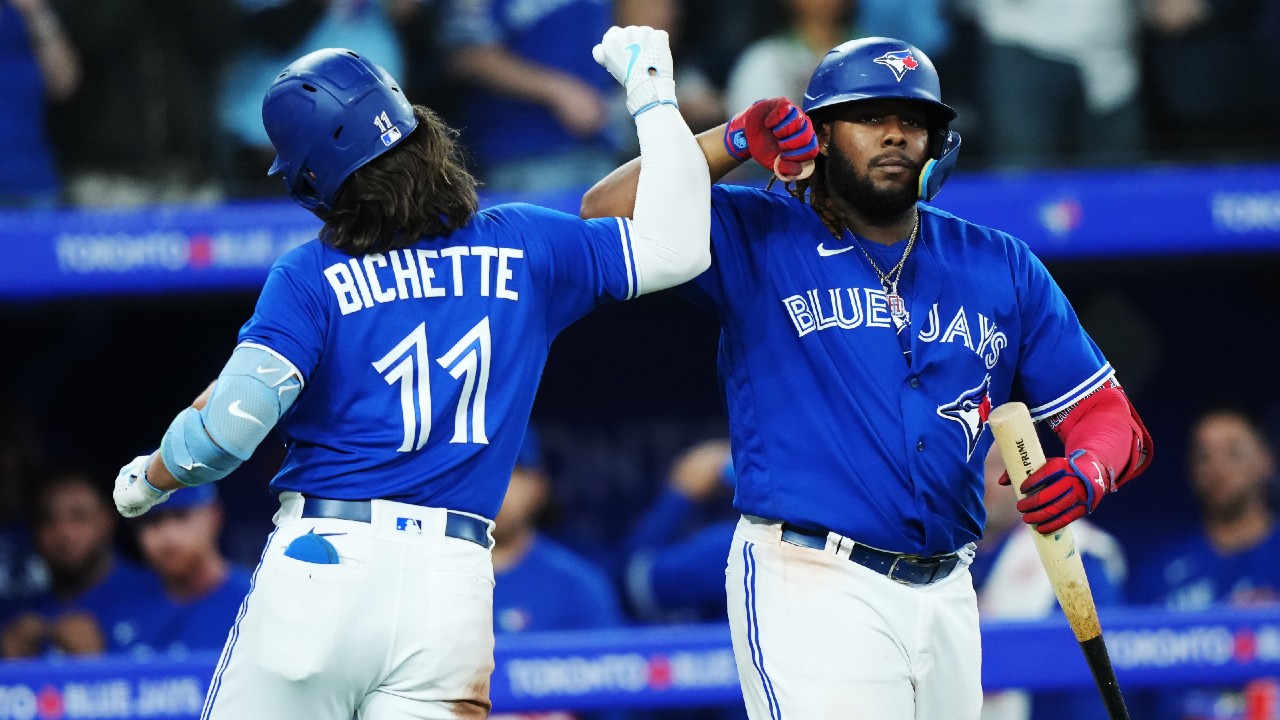
TORONTO — The injuries to Alek Manoah and Jordan Romano plus the demotion of Erik Swanson in the last week are a real problem for the Toronto Blue Jays, one perhaps even more glaring than the club’s ongoing hunt for more offence.
That’s not a hot-take reaction to Tuesday’s 10-1 thumping by the Baltimore Orioles, in which Manoah’s spot came up for the first time since he sprained his UCL and things did not go well after Trevor Richards opened with two shutout innings. Genesis Cabrera gave up a two-out Adley Rutschman RBI single in the third before ceding to Bowden Francis, who promptly served up a three-run homer to Ryan Mouncastle and the AL wild-card leaders never looked back.
Mountcastle took Francis deep after another Rutschman RBI single in the fifth to make it 7-0 and the Orioles added on more from there, before a crowd of 28,816 that had little to savour beyond the Loonie Dogs.
As bleak as it all was subjectively, especially factoring in that Manoah’s unfilled spot in the rotation comes up 20 more times this year, an objective look at the impact of the big righty’s absence, along with that of Romano and Swanson, underlines how damaging it all is to the Blue Jays’ hopes of reviving their off-the-rails season.
Consider that coming into the season, the ZIPS projection system over at FanGraphs envisioned Manoah delivering 1.3 WAR over 120.2 innings, with Romano, in 58.2 innings, and Swanson, over 60 frames, each chipping in another 0.6 WAR apiece.
So that’s 2.5 wins of projected value crucial to the Blue Jays’ chances of success that’s suddenly under threat. The extent of Manoah’s elbow injury will be determined Thursday when he visits specialist Dr. Keith Meister but it’s reasonable to expect an extended absence, meaning he’ll have limited runway to recoup some of his projected contributions.
Romano, who received an anti-inflammatory injection in his right elbow on Sunday, and Swanson, who is expected to get at least 3-4 outings at triple-A Buffalo to work through the issues that led to his struggles, should both return but will also have a tough time making up ground.
As things stand, the trio has combined for minus-0.7 WAR, which with 37 per cent of the season already gone, leaves them a win-and-a-half off the 0.9 they were projected to have produced by now.
ZIPS’ projections has them chipping in 0.7 WAR the rest of the way, and again, that’ll be difficult to meet.
Now, those are numbers produced by one neutral third party and aren’t taken as gospel, by any stretch of the imagination. But the Blue Jays have their own proprietary projection systems and the numbers for Manoah, Romano and Swanson would have been baked into their assumptions for the 2024 season.
Without those contributions, others must pick up the slack and they don’t have a wealth of alternatives.
Francis, projected to deliver 0.9 WAR, was at minus-0.2 before the Orioles knocked him around for four runs in 3.1 innings, which included the two Mountcastle homers. His ZIPS rest-of-season projection is 0.3 WAR, which would take him to 0.1 for the year.
Again, that’s a major value gap, and that’s without considering the impact on the entire pitching staff not being down three key arms.
Richards, who made three starts in 2023 and four in 2022, struck out four in his two innings and might have gone longer if not for Mountcastle battling him for 12 pitches in the first before going down swinging.
He can be part of the solution, but that also limits his usage between outings, tying manager John Schneider’s hands with his most versatile relief arm.
Yariel Rodriguez, due to pitch another rehab game for Buffalo on Wednesday, is on the horizon, but he’d require a piggyback partner the way Richards does.
That could be Francis or Richards, but that’s also hamstringing bullpen usage, as the Blue Jays would have to ensure there’s always a long option “available five days from now,” said Schneider. “But you can’t ignore what’s happening the day of. If we need Trev for an inning the day before that spot comes up, definitely going to use him. Hopefully Yariel is part of that equation here shortly. But you’ve got to be a little bit careful with when you’re using them now, but not at the expense of the other guys in the bullpen. So it’s a delicate, delicate line. You want to keep one of them pretty well rested.”
There’s a cumulative impact to that as well, as Tuesday the Blue Jays had to run through five relievers behind Richards to cover nine innings, which impacts availability for the next day. There’s a potential impact on their effectiveness, as well, especially if one of the other four starters has a shorter outing during a rotation turn.
In turn, that makes it more difficult for other relievers to hit their projections, compounding the value lost due to the absences of Manoah, Romano and Swanson.
A high-powered offence like that of the Orioles might be able to counterbalance that, but the Blue Jays managed just five hits, including George Springer’s seventh-inning solo shot, and steady production this season remains a moving target.
But the recent hits to the pitching staff are a problem that runs much deeper than it would appear.